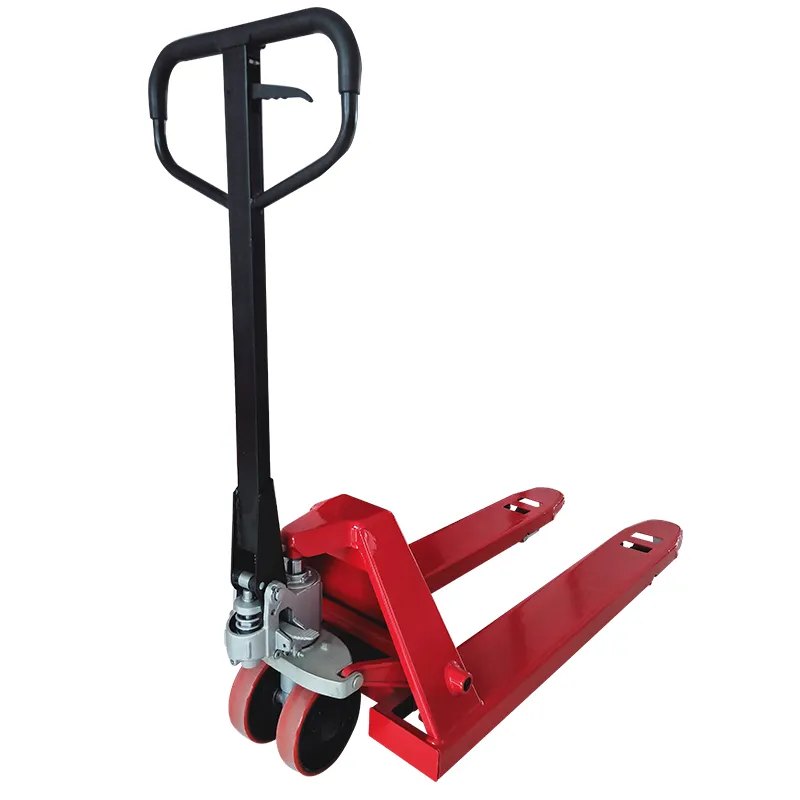


Understanding Pallet Truck Hydraulic Systems
In today's fast-paced logistics and warehousing environments, efficiency and productivity are paramount. One of the essential tools that facilitate the smooth movement of goods is the pallet truck, particularly the hydraulic version. A hydraulic pallet truck combines simplicity with exceptional performance, making it an indispensable piece of equipment for businesses that handle heavy loads.
A pallet truck, also known as a hand pallet jack or a pump truck, is designed for lifting and transporting palletized items. The hydraulic system is the heart of this equipment, serving as the mechanism that raises and lowers the load with minimal effort. By understanding the fundamental aspects of hydraulic pallet trucks, users can enhance their operational efficiency and ensure the safety of their workforce.
How Hydraulic Systems Work
At the core of a hydraulic pallet truck is a hydraulic cylinder filled with fluid. The principle of hydraulics is based on Pascal's law, which states that pressure applied to a confined fluid is transmitted undiminished in all directions. When the operator pumps the handle, it creates pressure in the hydraulic fluid, causing the piston in the cylinder to rise. This action elevates the forks of the pallet truck, enabling the user to lift heavy loads with ease.
The design of hydraulic pallet trucks allows them to accommodate a wide range of weights, typically from a few hundred to several thousand pounds. By varying the size and construction of the components, manufacturers create models tailored to different industries and applications, ensuring that there is a suitable option for almost any task.
Benefits of Hydraulic Pallet Trucks

One of the most significant advantages of hydraulic pallet trucks is the reduction in physical strain on operators. Unlike manual lifting, which can lead to injuries and fatigue, a hydraulic system allows users to move heavy loads with minimal effort. This ergonomic benefit not only enhances employee safety but also improves overall productivity, as workers can complete tasks more efficiently and with less downtime due to fatigue.
Additionally, hydraulic pallet trucks are relatively cost-effective. They require less maintenance than electric forklifts and are far simpler in design, making them accessible to small businesses and startups. Their straightforward operation means that new employees can be trained quickly, allowing for seamless integration into existing workflows.
Hydraulic pallet trucks are also versatile. They can operate in various environments, including warehouses, retail settings, and even outdoor locations in some cases. Their compact design allows them to maneuver easily in tight spaces, enabling users to transport goods directly to their destinations without needing heavy machinery.
Safety Considerations
While hydraulic pallet trucks are generally safe to use, operators should be trained to ensure proper usage. Understanding weight limits, maintaining the equipment, and conducting regular safety checks are crucial to preventing workplace accidents. Operators should always ensure that the load is stable and within capacity to avoid tipping or loss of control while moving.
Conclusion
Hydraulic pallet trucks are vital in modern logistics and material handling. Their efficient design and ease of use significantly enhance productivity while reducing the physical toll on workers. As businesses continue to seek ways to optimize their operations, incorporating hydraulic pallet trucks can be a strategic move that leads to improved efficiency and safety in handling goods. By investing in high-quality hydraulic pallet trucks and ensuring proper training for operators, businesses can streamline their processes and foster a more productive working environment.



